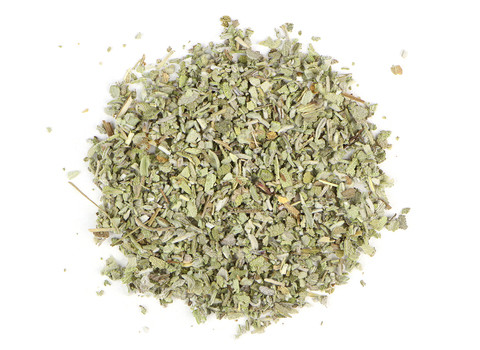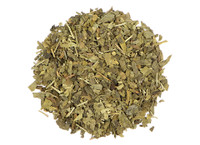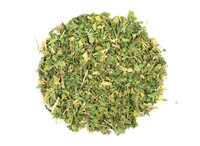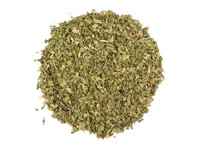-
Product Description
COMMON NAME
Standardized: sage
Other: Dalmatian sage, garden sage, common sageBOTANICAL NAME
Salvia officinalis L.
Plant Family: LamiaceaeOVERVIEW
The common garden sage has been known and used for culinary and herbal purposes for centuries. The low-growing evergreen shrub is popular in nearly every European cuisine and is used variously to flavor various proteins, soups, puddings, cheeses and vegetables. Its unmistakable peppery flavor makes it popular for use in stuffing and other hardier dishes. "Why should a man die when sage grows in his garden?" Martin Luther is said to have asked in the middle ages, and his statement is reflected in the herb's Latin name salvia, derived from the Latin word to heal.PARTS USED
Dried leaf.TYPICAL PREPARATIONS
Used as a spice in food, and as a tea. Sometimes found in washes and cosmetics.SUMMARY
One of the more popular herbs in the Middle Ages through 18th century, sage has drifted into lesser use as more delicate flavors grew more popular. The evergreen herb is enjoying a resurgence of late, in part based on its many uses and benefits. Sage can be used to flavor and preserve various proteins or cheese, and is often used in soups and salads as well.PRECAUTIONS
If consumption exceeds use as a spice then not for use in pregnancy or breastfeeding except under the supervision of a qualified healthcare practitioner.
We recommend that you consult with a qualified healthcare practitioner before using herbal products, particularly if you are pregnant, nursing, or on any medications.This information has not been evaluated by the Food and Drug Administration. This product is not intended to diagnose, treat, cure, or prevent any disease. For educational purposes only.
Source: Mountain Rose Herbs
-
Product Reviews
-
Find Similar Products by Category








